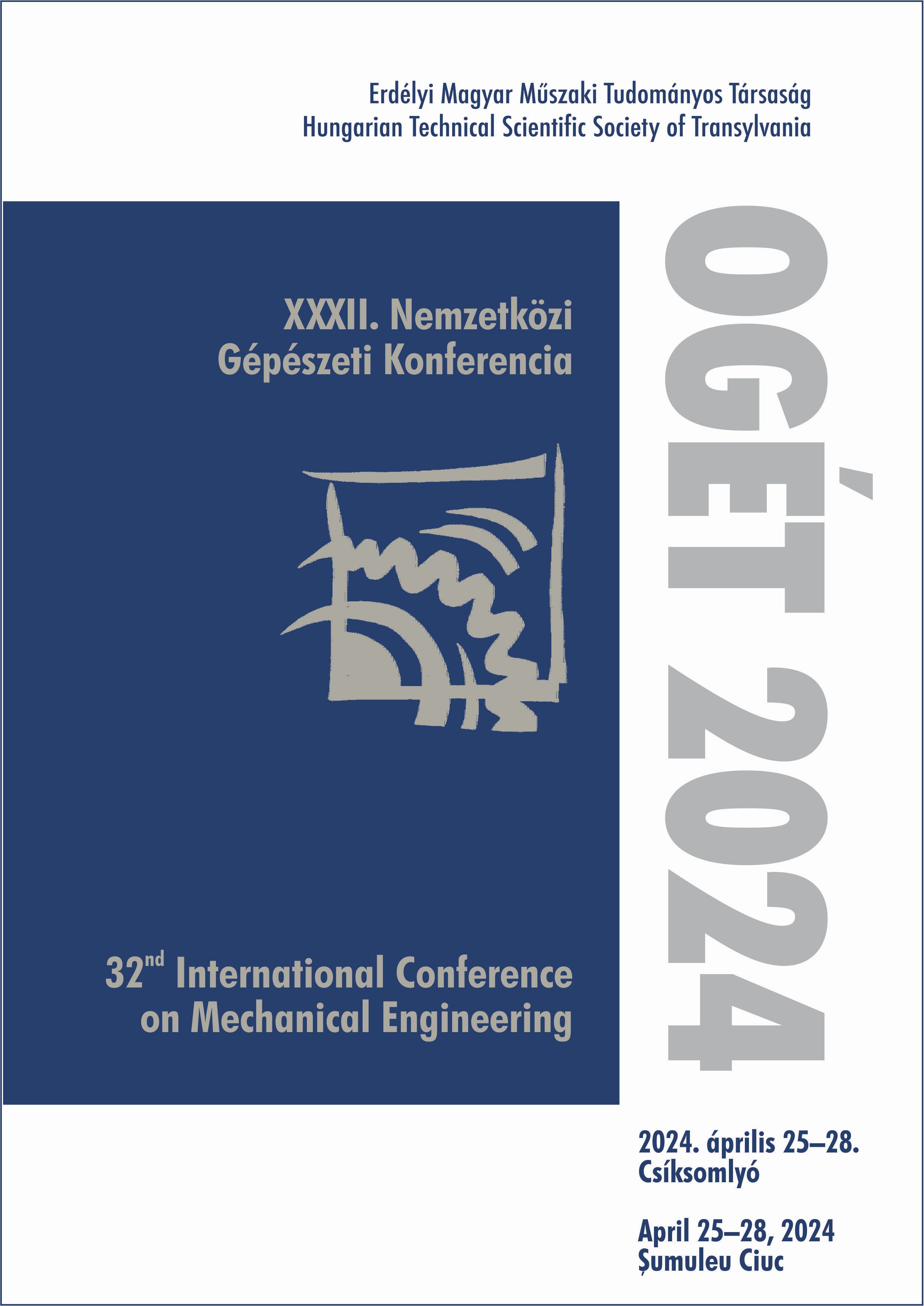Szénszállal erősített polimer (CFRP) kompozitok többtengelyes élmarási technológiájának vizsgálata forgácsolásindukált sorja és felületi érdesség szempontjából
Investigation of multi-axis edge trimming technology of carbon fibre-reinforced polymer (CFRP) composites in terms of machining-induced burr and surface roughness
Keywords:
CFRP, Machining, Edge trimming, Multi-axis, Burr, Surface roughness, /, Forgácsolás, Élmarás, Többtengelyes marás, Sorja, Felületi érdességAbstract
Carbon fibre reinforced polymer (CFRP) composites are increasingly used in industrial environments primarily due to their high specific strength. The pre-production of CFRP composites usually does not reach the desired size- and shape tolerance, so machining is often necessary. However, several difficulties arise during the cutting of CFRPs, including the increased formation of cutting-induced burrs. In this study, we examined the previously developed multi-axis edge trimming technology, by varying the angle of tool tilting and the extent of the remaining chamfer. The cutting experiments were performed on a VHTC 5-axis machining center using a THOMAS 23N1106 single-edged, uncoated carbide milling tool with a helix angle of 0°. After the machining experiments, we took pictures of the finished edges with an OLYMPUS SZX16 stereomicroscope. After the microscopic examination, we measured the surface roughness of the workpieces with a Mitutoyo Surftest SJ-401 surface roughness tester and a KEYENCE VR 3-dimensional microscope. Based on the analysis of variance, it can be concluded that the effect of the tool tilting angle is significant, which should be chosen as large as possible for the avoiding burr, and as small as possible if the surface roughness is considered to be the optimisation parameter.
Kivonat
A szénszállal erősített polimer (CFRP) kompozitokat egyre szélesebb körben alkalmazzák ipari környezetben elsősorban a nagy fajlagos szilárdságuk miatt. A CFRP kompozitok előgyártása legtöbbször nem éri el a kívánt méret- és alaktűrést, ezért forgácsoló megmunkálásra van szükség. A szénszállal erősített polimer kompozitok forgácsolása során azonban több nehézség is felmerül, többek között a forgácsolásindukált sorja fokozott képződése. A kutatásunk során egy korábban általunk kifejlesztett többtengelyes élmaró technológiát vizsgáltuk, a bedöntési szög és a maradó letörés mértékének változtatásával. A forgácsoló kísérleteket egy VHTC 5 tengelyes megmunkálóközponton végeztük, egy THOMAS 23N1106 típusú tömör, egyélű, bevonat nélküli, 0°-os spirálszöggel rendelkező keményfém marószerszámot alkalmazva. A forgácsolás után az elkészült élekről felvételeket készítettünk egy OLYMPUS SZX16 típusú sztereomikroszkóppal. A mikroszkópos vizsgálat után egy Mitutoyo Surftest SJ-401 típusú analóg felületi érdességmérővel, valamint egy KEYENCE VR series 3 dimenziós mikroszkóppal mértük le a munkadarabok felületi érdességét. A varianciaanalízis alapján megállapítható, hogy a bedöntési szög hatása szignifikáns. Amelyet a sorja szempontjából a lehető legnagyobbra kell választani, míg a felületi érdesség szempontjából a lehető legkisebbre.
References
J. Ahmad, Introduction to Polymer Composites, in: J. Ahmad (Ed.), Machining of Polymer Composites, Springer US, Boston, MA, 2009: pp. 1–35.
C.R. Cunningham, A. Shokrani, V. Dhokia, Edge trimming of carbon fibre reinforced plastic, Procedia CIRP 77 (2018) 199–202.
N. Forintos, T. Czigany, Multifunctional application of carbon fiber reinforced polymer composites: Electrical properties of the reinforcing carbon fibers – A short review, Composites Part B: Engineering 162 (2019) 331–343.
N. Geier, G. Póka, Á. Jacsó, C. Pereszlai, A method to predict drilling-induced burr occurrence in chopped carbon fibre reinforced polymer (CFRP) composites based on digital image processing, Composites Part B: Engineering 242 (2022) 110054.
N. Geier, J. Xu, D.I. Poór, J.H. Dege, J.P. Davim, A review on advanced cutting tools and technologies for edge trimming of carbon fibre reinforced polymer (CFRP) composites, Composites Part B: Engineering 266 (2023) 111037.
G. Magyar, D. Károly, J. Xu, N. Geier, Analysis of drilling-induced geometrical damages in basalt and carbon fibre-reinforced polymer (BFRP and CFRP) composites, Int J Adv Manuf Technol 123 (2022) 357–372.
C. Pereszlai, N. Geier, Comparative analysis of wobble milling, helical milling and conventional drilling of CFRPs, The International Journal of Advanced Manufacturing Technology 106 (2020).
R. Teti, Machining of Composite Materials, (n.d.).
T.S. Tima, G. Magyar, N. Geier, Szénszállal erősített polimer kompozitok többtengelyes élmarási technológiájának fejlesztése és kísérleti vizsgálata: Development and experimental investigation of multi-axis edge- trimming technology of carbon fibre reinforced polymer composites, Nemzetközi Gépészeti Konferencia – OGÉT (2023) 466–471.
S. Vigneshwaran, M. Uthayakumar, V. Arumugaprabu, Review on Machinability of Fiber Reinforced Polymers: A Drilling Approach, Silicon 10 (2018) 2295–2305.
Boeing: 787 By Design, (n.d.).


